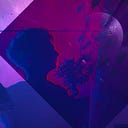HIV/N6 Plasmid Gene Therapy
Project Update (2022)
Summary:
Development and testing of an N6 plasmid gene therapy for treating/preventing HIV has continued, intermittently, through 2022:
- The Western blot from the second experiment (2019) indicated that my blood serum’s binding to HIV’s envelope increased (and fell) after the administration: an indirect yet promising result.
- A third test (2020) was designed to include a more clear signal: histags, attached to the antibody, for easy detection later. The results were inconclusive: irregular thawing of the samples was perhaps the culprit.
- A fourth test is planned for this month (Sept ‘22), to examine the safety of intramuscular injections, which may lead to a higher yield of antibodies. Participation is limited to the 3 researchers.
Following conclusive results from the fourth test, a Phase 1 clinical trial sponsored by Minicircle will be presented to an IRB. Although a Phase 1 is primarily focused on generating safety data, this proposed trial may indicate if the Minicircle can produce antibodies at a therapeutically relevant titer. The Phase 1 will not involve treatment interruption, and enrollment will likely be open to both HIV- and HIV+ participants.
Context:
HIV has been contained, but not defeated. Conventional medicine requires a lifetime of adherence to anti viral pills that inhibit HIV’s ability to replicate. These pills are costly in price and long term side effects.
Many researchers are experimenting with ‘broadly neutralizing antibodies’ (bnabs) to fight HIV. Bnabs are typically found in humans and then iteratively mutated in a lab to increase their potency and lifespan. A combination of bnabs targeting different sites on HIV’s envelope could make it practically impossible for latent, mutant HIV to escape.
While it is possible to administer ‘bnabs’ directly into the bloodstream, the neutralization effect only lasts a matter of weeks before the virus returns. As the half life of bnabs is fairly short, a sustained delivery method may create longer lasting treatments.
Origin:
A researcher, Andreas Stuermer, working with the startup ‘Ascendance Biomedical’ found the gene sequence for an antibody called ‘N6’. In a subsequent experiment performed by the NIH, the antibody proved effective at neutralizing over 98% of the HIV strains that they tested.
‘Ascendance Biomedical’ eventually failed for a number of reasons, but the concept has been further developed by ‘Minicircle’ as an application for their plasmid vector. While conventional plasmids may have lifespans counted in days, Minicircles are capable of lasting for months.
Experiments:
Visualizations for these experiments can be found here: https://mirror.xyz/0x735B3E637d8006887D97b7DfE4D846a3F1002A6D/FGOfWaNnIj8xllXb8PGS_AqFKDDFPl9C2xHLXJglaeQ
Test 1:
The initial experiment consisted of a basic plasmid — a circular piece of DNA — that had the gene sequence for the N6 antibody ‘pasted’ in to it. The participant — Tristan Roberts — was off of conventional HIV treatment at the time. The only measures being taken were ‘viral load’ and ‘CD4’ count. The plasmid was not expected to last long: conventional plasmids are cleared by the body within days or weeks.
Following injection of the plasmid, along with a catalyst for opening the pores of the cell, PEI, Tristan saw an increase in his CD4 count but also his viral load, suggesting that the gene vector either did not work, or did not express in sufficient quantities to neutralize the virus. The overall safety of the approach was confirmed: only a small red bump was left after the injection, with no other noticeable side effects.
Write up on Medium: https://aitheric.medium.com/hiv-n6-experimental-therapy-results-1-month-8eda36f4f37c
Test 2:
The second experiment used a more advanced plasmid, known as a ‘Minicircle’, to deliver the N6 gene. Three participants — Tristan, Walter, and Mac — all tried varying quantities of the plasmid.
Tristan was on conventional medicine for the duration of the experiment. Rather than rely upon ‘viral load’ and ‘cd4’ to test efficacy, we analyzed the blood serum for binding to HIV’s envelope — GP120 — in an Elisa. The results suggested that binding to GP120 increased following the injection.
Unlike the first experiment, localized inflammation, around the size of a dime, accompanied this injection in all three participants. Effects subsided within a couple days. No other side effects were experienced. Write up on Medium: https://aitheric.medium.com/vivisection-an-update-on-the-n6-hiv-experiment-a184e53fcdbe
Test 3:
The third experiment also used a ‘Minicircle’ for N6, with an additional modification: it would produce ‘histags’, which are easy to quantify in blood serum, and do not occur naturally.
Tristan tested out this version, and subsequent analysis of his blood serum revealed the presence of histags in the weeks following the injection. Blood samples were taken for 2 months following the injection, and all revealed an increasing amount of histags, which suggests in turn a presence of the N6 antibody. No side effects were experienced.
This is taken as evidence that the gene therapy lasts long enough to be therapeutically relevant, but additional testing must be done to confirm that the antibody is being expressed in sufficient quantity to prevent and or treat HIV.
Combination Treatments as a Functional Cure:
A single bnab could be effective as a preventive measure, but HIV’s mutability suggests that the latent virus would eventually ‘escape’ in those already infected.
Thus, we believe that a ‘cocktail’ that delivers 2–3 antibodies should be pursued. While the virus may evolve against one, it should not be able to evolve against all of the them.
Additionally, we believe that we should combine this ‘bnab cocktail’ with…
- Latency reversal agents, that allow the immune system to clear latently infected cells, and
- Immunity adjutants, that stimulate natural immune processes, increasing the odds of ‘passive immunization’; of the patient learning how to produce effective antibodies endogenously
Our hypothesis is that a patient, having utilized the above treatments, has a worthwhile chance of keeping the virus in remission following interruption of ART.
